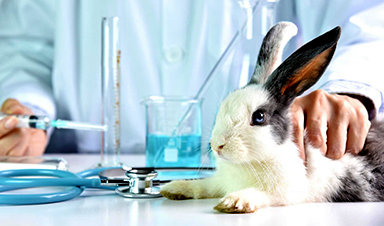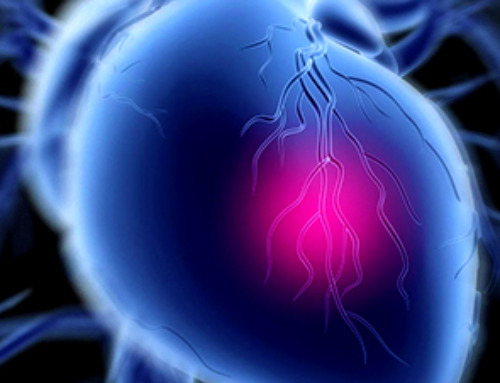| Researchers from ITMO’s SCAMT Institute have developed a new nanomedicine testing system based on plant leaves. This new solution will make it possible to significantly cut down on animal testing. | |
| The system was described in Nano Letters (“Bioinspired In Vitro Brain Vasculature Model for Nanomedicine Testing Based on Decellularized Spinach Leaves”). | |
| One of the most challenging tasks for medical science nowadays is the development of an efficient model for testing of nanopharmaceutical treatments. This model has to represent the body part or system targeted by the treatment, such as the cardiovascular system, while also making it possible to monitor the treatment in action. | |
| Existing models based on cell or tissue cultures cannot mimic the true complexity of a living organism. Some researchers also rely on microfluidic chips that can imitate the cardiovascular system with the channels that can be etched into them. | |
| However, these chips are far from actual biological objects in terms of their composition and physical parameters. Moreover, they require a long and costly preparation and carry a risk of delivering imprecise research results. | |
| “Despite the potential of nanopharmaceutics, as well as a great number of publications and preclinical trials, there still aren’t enough cases of these treatments seeing any practical application. These days, there is an extremely high demand for testing models that could imitate trials on live organisms. Any attempt at moving to a new model brings us closer to a breakthrough and helps spare the lives of a great number of lab animals,” explains Vladimir Vinogradov, a co-author of the article and professor at ITMO’s ChemBio cluster. | |
| Taking into account the drawbacks of traditional models, scientists at ITMO’s SCAMT Institute developed a model based on a spinach leaf. At its core is the leaf’s vasculature with all cell components removed apart from the cell walls. | |
| The model consists of cellulose, a substance that makes plant tissue more mechanically durable and stable in shape compared to that of animals. The resulting model is comparable to the arterioles and capillaries of the human brain in terms of their branching and diameter. This feature will make it possible to use the model to test both traditional and nanopharmaceutical treatments. | |
| The new model has already been used to simulate thrombosis: first, the researchers inserted a model thrombus into the vasculature. Then, loaded nanoparticles were magnetically guided into the blocked area in order to dissolve the thrombus. | |
| After successful tests of the model’s efficiency, the researchers are going to plant actual human cells into the cellulose scaffold to make the system an even more realistic imitation of the human vasculature. | |
| “We want to attract the attention of the scientific community to the problem of irrational usage of laboratory animals. Currently, you only have to test a new substance on cell cultures before proceeding with animal trials. I think this is wrong – we need another stage in between these two which would identify flaws and provide room for improvement in drugs, thus saving the lives of many animals. Maybe plant-based models will serve as this middle stage,” says Aleksandra Predeina, a co-author of the article and a researcher at ITMO’s Faculty of Biotechnologies. |
News
Challenging Previous Beliefs: Japanese Scientists Discover Hidden Protector of Heart
A Japanese research team found that the oxidized form of glutathione (GSSG) may protect heart tissue by modifying a key protein, potentially offering a novel therapeutic approach for ischemic heart failure. A new study [...]
Millions May Have Long COVID – So Why Can’t They Get Diagnosed?
Millions of people in England may be living with Long Covid without even realizing it. A large-scale analysis found that nearly 10% suspect they might have the condition but remain uncertain, often due to [...]
Researchers Reveal What Happens to Your Brain When You Don’t Get Enough Sleep
What if poor sleep was doing more than just making you tired? Researchers have discovered that disrupted sleep in older adults interferes with the brain’s ability to clean out waste, leading to memory problems [...]
How to prevent chronic inflammation from zombie-like cells that accumulate with age
In humans and other multicellular organisms, cells multiply. This defining feature allows embryos to grow into adulthood, and enables the healing of the many bumps, bruises and scrapes along the way. Certain factors can [...]
Breakthrough for long Covid patients who lost sense of smell
A breakthrough nasal surgery has restored the sense of smell for a dozen long Covid patients. Experts at University College London Hospitals NHS Foundation Trust successfully employed a technique typically used for correcting blocked nasal passages, [...]
Scientists Invent Plastic That Can Dissolve In Seawater In Just A Few Hours
Plastic waste and pollution in the sea have been among the most serious environmental problems for decades, causing immense damage to marine life and ecosystems. However, a breakthrough discovery may offer a game-changing solution. [...]
Muscles from the 3D printer
Swiss researchers have developed a method for printing artificial muscles out of silicone. In the future, these could be used on both humans and robots. Swiss researchers have succeeded in printing artificial muscles out [...]
Beneficial genetic changes observed in regular blood donors
Researchers at the Francis Crick Institute have identified genetic changes in blood stem cells from frequent blood donors that support the production of new, non-cancerous cells. Understanding the differences in the mutations that accumulate [...]
Shocking Amounts of Microplastics in the Brain – It Could Be Increasing Our Risk of Dementia
The brain has higher concentrations of plastic particles compared to other organs, with increased levels found in dementia patients. In a comprehensive commentary published in Brain Medicine, researchers highlight alarming new evidence of microplastic accumulation [...]
Baffling Scientists for Centuries: New Study Unravels Mystery of Static Electricity
ISTA physicists demonstrate that contact electrification depends on the contact history of materials. For centuries, static electricity has intrigued and perplexed scientists. Now, researchers from the Waitukaitis group at the Institute of Science and [...]
Tumor “Stickiness” – Scientists Develop Potential New Way To Predict Cancer’s Spread
UC San Diego researchers have developed a device that predicts breast cancer aggressiveness by measuring tumor cell adhesion. Weakly adherent cells indicate a higher risk of metastasis, especially in early-stage DCIS. This innovation could [...]
Scientists Just Watched Atoms Move for the First Time Using AI
Scientists have developed a groundbreaking AI-driven technique that reveals the hidden movements of nanoparticles, essential in materials science, pharmaceuticals, and electronics. By integrating artificial intelligence with electron microscopy, researchers can now visualize atomic-level changes that were [...]
Scientists Sound Alarm: “Safe” Antibiotic Has Led to an Almost Untreatable Superbug
A recent study reveals that an antibiotic used for liver disease patients may increase their risk of contracting a dangerous superbug. An international team of researchers has discovered that rifaximin, a commonly prescribed antibiotic [...]
Scientists Discover Natural Compound That Stops Cancer Progression
A discovery led by OHSU was made possible by years of study conducted by University of Portland undergraduates. Scientists have discovered a natural compound that can halt a key process involved in the progression [...]
Scientists Just Discovered an RNA That Repairs DNA Damage – And It’s a Game-Changer
Our DNA is constantly under threat — from cell division errors to external factors like sunlight and smoking. Fortunately, cells have intricate repair mechanisms to counteract this damage. Scientists have uncovered a surprising role played by [...]
What Scientists Just Discovered About COVID-19’s Hidden Death Toll
COVID-19 didn’t just claim lives directly—it reshaped mortality patterns worldwide. A major international study found that life expectancy plummeted across most of the 24 analyzed countries, with additional deaths from cardiovascular disease, substance abuse, and mental [...]






















